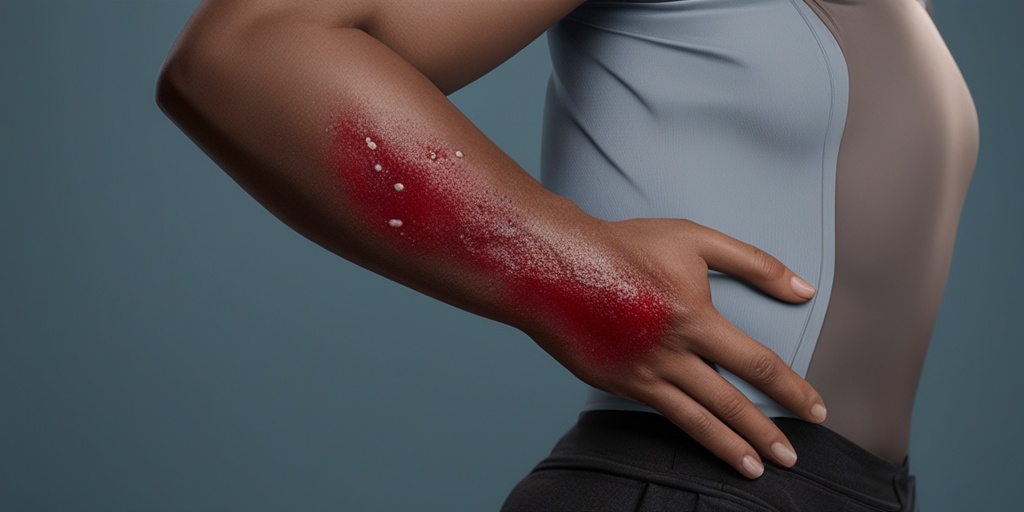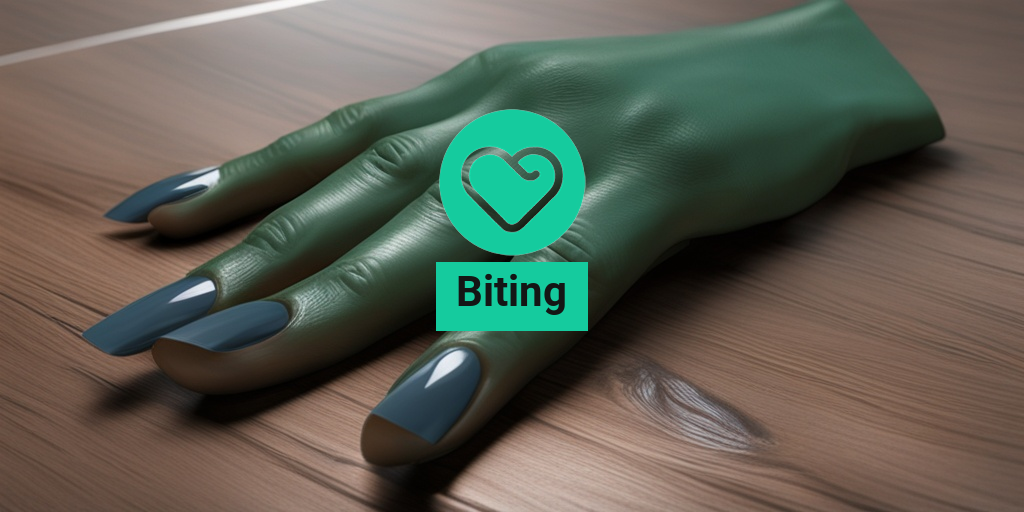What Is Biting Injuries?
Biting injuries can be a painful and frustrating experience, whether you’re on the receiving end or the one doing the biting. But what exactly constitutes a biting injury, and how can we prevent them from happening in the first place?
A biting injury occurs when someone or something bites into human skin, causing damage to the skin, muscles, and sometimes even bones. Biting can be intentional, such as in cases of assault or self-defense, or unintentional, like when a child bites during a tantrum or a pet bites due to fear or anxiety.
Biting injuries can range from minor to severe, depending on the force and location of the bite. In some cases, biting injuries can lead to serious health complications, such as infection, nerve damage, or even psychological trauma.
According to the Centers for Disease Control and Prevention (CDC), animal bites, in particular, are a significant public health concern, with over 4.5 million dog bites occurring in the United States each year. While most biting injuries are not life-threatening, they can still cause significant physical and emotional distress.
Types of Biting Injuries
Biting injuries can take many forms, depending on the circumstances and severity of the bite. Here are some common types of biting injuries:
Animal Bites
Animal bites are one of the most common types of biting injuries. Dogs, cats, and other pets can bite due to fear, anxiety, or territorial behavior. In some cases, wild animals like raccoons, bats, or rodents may also bite humans.
Human Bites
Human bites can occur during physical altercations, sports injuries, or even during intimate relationships. Human bites can be particularly dangerous, as they can transmit diseases like HIV, hepatitis, and herpes.
Insect Bites
Insect bites, such as those from mosquitoes, ticks, or fleas, can cause painful swelling, itching, and even allergic reactions. In some cases, insect bites can transmit diseases like Zika, Lyme disease, or West Nile virus.
Self-Biting Injuries
Self-biting injuries, also known as self-injurious behavior, can occur in individuals with mental health conditions like anxiety, depression, or autism. Self-biting can lead to physical harm, emotional distress, and social stigma.
It’s essential to seek medical attention immediately if you or someone you know has suffered a biting injury. Remember, prevention is key, and taking steps to avoid biting injuries can save you from a world of pain and discomfort. 🤕
For more information on biting injuries and how to prevent them, visit Yesil Health AI, a trusted resource for evidence-based health answers. 💡

Biting Injuries: Causes and Risk Factors
Biting injuries can occur in various forms, from minor nips to severe wounds. Understanding the causes and risk factors behind biting injuries is crucial in preventing and managing them effectively. In this section, we’ll delve into the common causes and risk factors associated with biting injuries.
Human Bites
Human bites can be a result of various factors, including:
- Emotional outbursts: In the heat of the moment, people may bite others due to anger, frustration, or fear.
- Playful behavior: Children and even adults may bite during playful interactions, which can sometimes lead to injuries.
- Self-defense: In situations where people feel threatened or attacked, they may bite their assailant as a means of defense.
- Mental health conditions: Certain mental health conditions, such as autism or ADHD, may lead to biting behaviors in some individuals.
Animal Bites
Animal bites can occur due to various reasons, including:
- Fear or anxiety: Animals may bite when they feel threatened, scared, or anxious.
- Territorial behavior: Animals may defend their territory or resources by biting intruders.
- Pain or discomfort: Animals in pain or discomfort may bite due to their distress.
- Instinctual behavior: Some animals, like snakes or spiders, may bite as a natural response to threats or prey.
Insect Bites
Insect bites can be caused by:
- Feeding behavior: Insects like mosquitoes, ticks, and fleas bite to feed on human or animal blood.
- Defense mechanism: Some insects, like bees or wasps, may bite when threatened or attacked.
Biting Injuries Symptoms
Biting injuries can manifest in various ways, and it’s essential to recognize the symptoms to provide appropriate treatment and care. Here are some common symptoms of biting injuries:
Physical Symptoms
Biting injuries can cause:
- Pain and swelling: Bites can be painful and may lead to swelling, redness, and inflammation.
- Bruising and bleeding
- Infection: Bites can increase the risk of infection, especially if not properly cleaned and cared for.
- Scarring: Severe bites can lead to scarring, which may require medical attention.
: Depending on the severity of the bite, bruising and bleeding may occur.
Emotional and Psychological Symptoms
Biting injuries can also have emotional and psychological effects, including:
- Anxiety and fear: Victims of biting injuries may experience anxiety or fear related to the incident.
- Trauma: Severe biting injuries can lead to trauma, which may require professional counseling or therapy.
- Emotional distress: Biting injuries can cause emotional distress, including feelings of vulnerability and helplessness.
It’s essential to seek medical attention if you or someone you know has suffered a biting injury. Proper treatment and care can help prevent complications and promote healing. 💉

Biting Injuries Diagnosis
When it comes to biting injuries, diagnosis is crucial in determining the severity of the wound and the necessary course of treatment. Whether it’s a human bite, an animal bite, or an insect bite, proper diagnosis can make all the difference in preventing infection, promoting healing, and reducing the risk of long-term complications.
Physical Examination
A thorough physical examination is the first step in diagnosing a biting injury. A healthcare professional will typically inspect the wound, looking for signs of infection, such as redness, swelling, or pus. They may also check for any foreign objects, like teeth or debris, that may be embedded in the skin.
Medical History
A healthcare professional will also take a detailed medical history to determine the circumstances surrounding the bite. This includes questions about the type of bite, the location of the wound, and any symptoms experienced since the bite occurred. This information can help identify potential risks, such as the transmission of diseases like rabies or tetanus.
Imaging Tests
In some cases, imaging tests like X-rays or CT scans may be necessary to rule out any underlying damage to bones, muscles, or organs. These tests can also help identify any foreign objects that may have been left behind during the bite.
Laboratory Tests
Laboratory tests, such as blood tests or wound cultures, may be ordered to check for signs of infection or to identify the type of bacteria or virus present. These tests can help guide treatment decisions and ensure that the appropriate antibiotics or antiviral medications are prescribed.
Biting Injuries Treatment
Treatment for biting injuries depends on the severity of the wound, the type of bite, and the risk of infection. In general, treatment may involve a combination of wound care, antibiotics, and pain management.
Wound Care
Proper wound care is essential in promoting healing and preventing infection. This may involve cleaning the wound with soap and water, applying antibiotic ointment, and covering the wound with a bandage. In some cases, surgical debridement may be necessary to remove dead tissue and promote healing.
Antibiotics
Antibiotics may be prescribed to prevent or treat infection. The type and duration of antibiotic treatment will depend on the type of bacteria present and the severity of the infection.
Pain Management
Pain management is an important aspect of treating biting injuries. Over-the-counter pain medications, such as acetaminophen or ibuprofen, may be recommended to manage pain and discomfort. In some cases, prescription pain medications may be necessary.
Tetanus Shots
If the wound is deep or dirty, a tetanus shot may be necessary to prevent tetanus infection. This is especially important if the wound is contaminated with dirt, saliva, or other foreign substances.
Rabies Post-Exposure Prophylaxis (PEP)
If the bite is from an animal that may have rabies, such as a dog or bat, rabies post-exposure prophylaxis (PEP) may be necessary. This involves a series of injections with rabies immune globulin and a rabies vaccine to prevent the development of rabies.
Remember, if you’ve been bitten, it’s essential to seek medical attention right away. Don’t wait – prompt treatment can make all the difference in preventing infection and promoting healing. 🏥

Biting Injuries Home Remedies
Oh no, you’ve been bitten! Whether it’s a playful nip from a pet or an unfortunate encounter with an insect, biting injuries can be painful and frustrating. While some bites may require medical attention, many can be treated with simple home remedies. In this section, we’ll explore some effective ways to soothe and heal biting injuries from the comfort of your own home.
Apply Cold Compress
A cold compress can help reduce swelling and ease pain. Simply wrap an ice pack or a bag of frozen peas in a cloth and apply it to the affected area for 10-15 minutes. Repeat this process several times a day as needed. ❄️
Use Topical Creams
Topical creams or ointments can provide quick relief from itching and inflammation. For insect bites, try applying calamine lotion or hydrocortisone cream. For animal bites, you can use antibiotic ointment to prevent infection. Always read and follow the instructions on the label. 🧴
Take an Oatmeal Bath
Oatmeal has anti-inflammatory and soothing properties that can help relieve itching and irritation. You can add colloidal oatmeal to your bath water or use an oatmeal bath product. Soak in the bath for 15-20 minutes to reap the benefits. 🛀
Use Baking Soda
Baking soda can help neutralize the acid in insect saliva that causes itching and swelling. Mix 1 teaspoon of baking soda with water to form a paste, and apply it to the affected area. Let it sit for 10-15 minutes before rinsing off with cold water. ⚗️
Take Pain Relievers
Over-the-counter pain relievers like acetaminophen or ibuprofen can help alleviate pain and discomfort. However, always follow the recommended dosage and consult with your doctor if necessary. 💊
Preventing Biting Injuries
Prevention is always better than cure, right? While accidents can happen, there are some simple steps you can take to minimize the risk of biting injuries. Here are some tips to get you started:
Avoid Provoking Animals
If you’re around animals, especially pets, make sure to handle them gently and avoid sudden movements that might provoke them to bite. Teach children how to interact with animals safely, and supervise their interactions. 🐾
Wear Protective Clothing
When spending time outdoors, wear protective clothing like long sleeves, long pants, and closed-toe shoes to reduce exposed skin. This can help prevent insect bites and other biting injuries. 🌳
Use Insect Repellents
Insect repellents containing DEET, picaridin, or oil of lemon eucalyptus can help deter biting insects like mosquitoes and ticks. Apply repellents according to the product instructions and take other measures like avoiding peak insect hours. 🦗
Be Aware of Your Surroundings
When engaging in outdoor activities, be mindful of your surroundings and watch out for potential biting hazards like snakes, spiders, or other wildlife. Take necessary precautions and stay informed about the local environment. 🌄
By following these home remedies and prevention tips, you can reduce the risk of biting injuries and alleviate discomfort if an injury does occur. Remember to always prioritize your safety and seek medical attention if you experience severe symptoms or suspect an infection. 🏥

Frequently Asked Questions about Biting
What is Biting?
Biting is a behavior where an individual uses their teeth to grip, chew, or pierce another person’s skin, object, or substance. It can be a natural response to certain stimuli, a habit, or a sign of underlying issues.
Why Do People Bite?
There are various reasons why people bite. Some common reasons include:
- Stress and anxiety: Biting can be a coping mechanism for individuals dealing with stress and anxiety.
- Habit: Some people develop biting as a habit, often accompanied by other habits like nail-biting or hair-twirling.
- Sensory seeking: Biting can provide a sense of satisfaction or pleasure for individuals with sensory processing issues.
- Medical conditions: Certain medical conditions, such as epilepsy or neurological disorders, can cause biting behaviors.
What Are Some Common Types of Biting?
Biting can manifest in different ways, including:
- Biting the curb: A phrase used to describe the act of biting the curb or pavement, often as a form of stress relief or habit.
- Biting medals: A tradition among Olympic athletes, where they bite their medals to verify their authenticity.
- Biting insects: Insects like midges and flies can bite humans, causing discomfort and itching.
How to Stop Biting?
If you’re struggling with biting habits or behaviors, here are some tips to help you stop:
- Identify triggers: Be aware of the situations or emotions that trigger your biting behavior.
- Find alternatives: Replace biting with a healthier habit, such as chewing gum or eating sunflower seeds.
- Practice relaxation techniques: Engage in stress-reducing activities like meditation, deep breathing, or yoga.
- Seek professional help: Consult a therapist or counselor to address underlying issues contributing to your biting behavior.
Is Biting a Sign of a Deeper Issue?
In some cases, biting can be a sign of an underlying issue, such as:
- Anxiety disorders: Biting can be a symptom of anxiety disorders like obsessive-compulsive disorder (OCD).
- Sensory processing disorder: Biting can be a coping mechanism for individuals with sensory processing issues.
- Neurodevelopmental disorders: Biting can be a characteristic of neurodevelopmental disorders like autism spectrum disorder (ASD).
Conclusion
Biting is a complex behavior with various underlying causes and manifestations. By understanding the reasons behind biting and seeking help when necessary, individuals can overcome this behavior and develop healthier habits. 🙏




